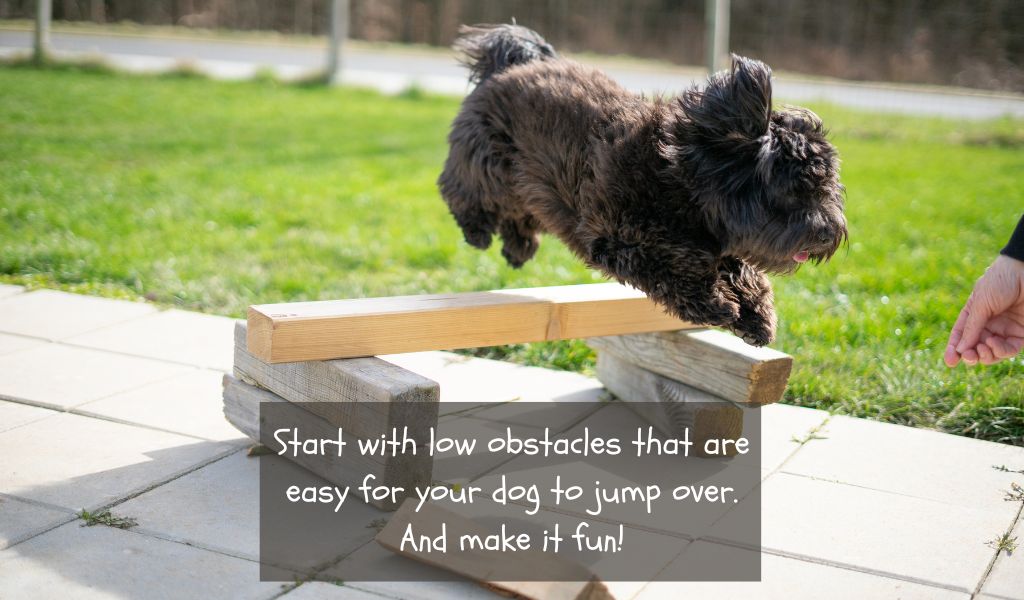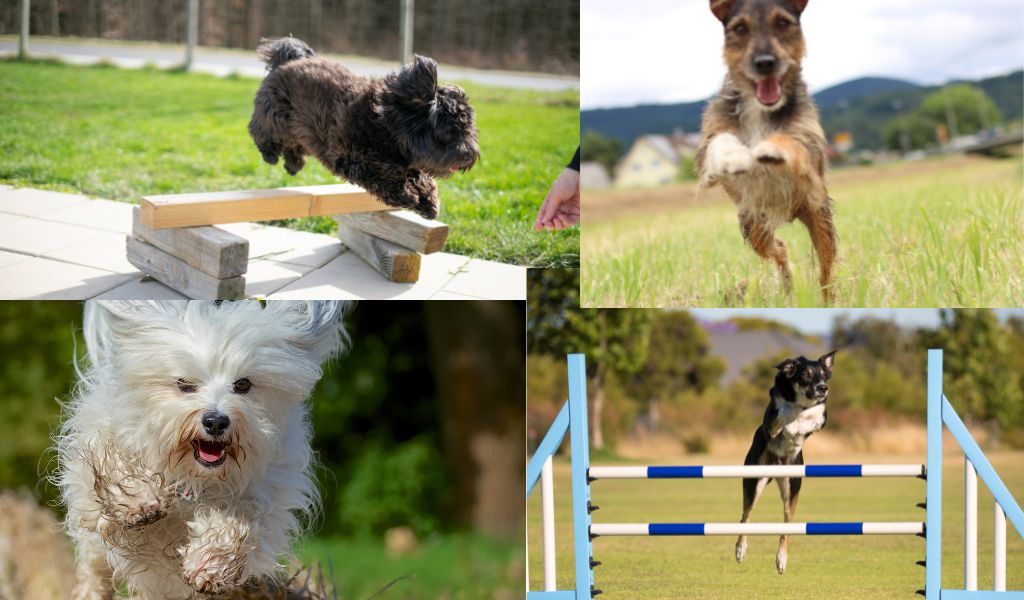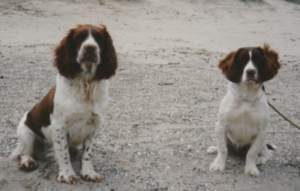No matter what type of dog you have whether it is a pet or working dog, there will be times when you encounter obstacles such as fences, styles, gates and walls.
Having a dog that is able to safely negotiate obstacles will save you having to pick him up whenever you encounter things such as fences and gates.
So, how do you help you dog to learn this?
Begin with small obstructions and encourage your dog to get across them. Walk over them with your dog using the words’ ‘over, over’ and provide lots of praise when he crosses over. Gradually make the obstacle higher and more difficult but don’t rush ahead too quickly.
How do you teach a dog to jump over an object?
It’s possible to teach any dog to do this but, in general, it’s best to start when the dog is a youngster and more eager to learn.
Begin with a small object, this can be anything as long as it will be easy for the dog to jump over it.
A good option is a collapsed dry stone wall, that you can often encounter when out walking with your pet, or a tree branch or other obstacle.
With your dog on his lead, walk up to the obstacle and step over it, at the same time encourage your dog to jump over, using the words ‘over’ or ‘get over’. Be enthusiastic and make this fun so that your dog enjoys himself.
When he clears the object give him lots of praise and make it fun.
Dog jumping thoughts.. ?
Start slowly and gradually increase the height of the obstacle
Avoid barbed wire and never let your dog jump it
Don’t send your dog over a fence if you don’t know/can’t see what’s on the other side
Be reasonable with your expectations. A terrier can’t jump the height of a Labrador
Remember that the objective is to deal with the obstacle. A dog may decide to go through or under as opposed to jumping – this is intelligence and should be encouraged.
Allow your dog to do it off the lead
When you are out and about with your dog and he is running free, look for opportunities to encourage him to ‘get over’ things.
When you come across an obstacle call him to you and cross over the obstacle yourself, encouraging your dog to follow you, and, when he does make a big fuss of him for his success.
Gradually make the obstacle higher
As your dog becomes more capable at negotiating obstacles look for chances to get him over things that are higher and more challenging.
If you go exploring with your dog then you’ll find all sorts of things that you can use, such as fallen trees, walls, low fences etc.

Getting your dog to jump over ditches
Just as with other obstacles, you’ll often come across ditches and other channels that you’ll need to cross.
As before, encourage your dog to get over.
Some dogs will jump and clear a ditch, whereas others will climb down into it and climb out of the other side as their ‘solution’ to getting over.
No matter how your dog does it, if he clears the obstacle then he has been successful.
How do you get a dog to jump over a fence?
It’s important to be careful when getting your dog to jump fences. The two most crucial things to consider are:
What is on the other side of the fence? If you don’t know or cannot see then don’t send or encourage your dog to get over it.
Barbed wire. Barbed wire can cause disastrous injuries to dogs if they jump fences that are topped with it. This wire can tear open a dog’s stomach if he gets caught on it. For this matter, never send a dog over a barbed wire fence.
Teaching a dog to jump a fence
From my perspective when I am looking to train a dog to clear any obstacle, fences included, I am looking for the dog to use his brains and think about the best way to get over it.
Some dogs will launch themselves at obstacles, Labradors are typical, and will just jump them, whereas other dogs, such as spaniels, are more likely to take a breath and find a way under or through it.
For me it doesn’t matter which way the dog decides, as long as he clears the obstacle as required.
With fences, just as with other obstacles, start low and slow, gradually increasing the height.
Your dog will soon learn to grip the fence by dangling his front legs over the top, pulling the rest of his body up and over – a little human assistance with this can speed up the learning process.
Have reasonable expectations
Some dogs are more adept at jumping than others and it’s important that your expectations are reasonable and within the ability of your pet.
A Border Collie is much more capable of jumping a farm gate than a Jack Russell Terrier, and the latter is much more likely to tunnel underneath the gate than the sheepdog.
So, be fair to your dog and don’t set him impossible challenges.
Remember that the objective is to get your dog over the obstacle and this can mean getting through it, across it, over the top of it etc, as long as he successfully negotiates it – that is the desired result.
Final Words
You and your dog will encounter obstacles when you are out walking and these will need crossing.
Whether they are fallen trees, fences, styles, walls or other things, having a dog that knows how to negotiate them will both save your back ( from having to lift them over ) and will allow you to have some extra fun with your dog.
Remember to keep your dog safe and away from barbed wire and to be reasonable with your expectations.
The objective is always for your dog to negotiate the obstacle and if he finds a way under or through it then he is using his intelligence to solve the problem – and that, at the end of the day, is what we are trying to achieve when training dogs.










